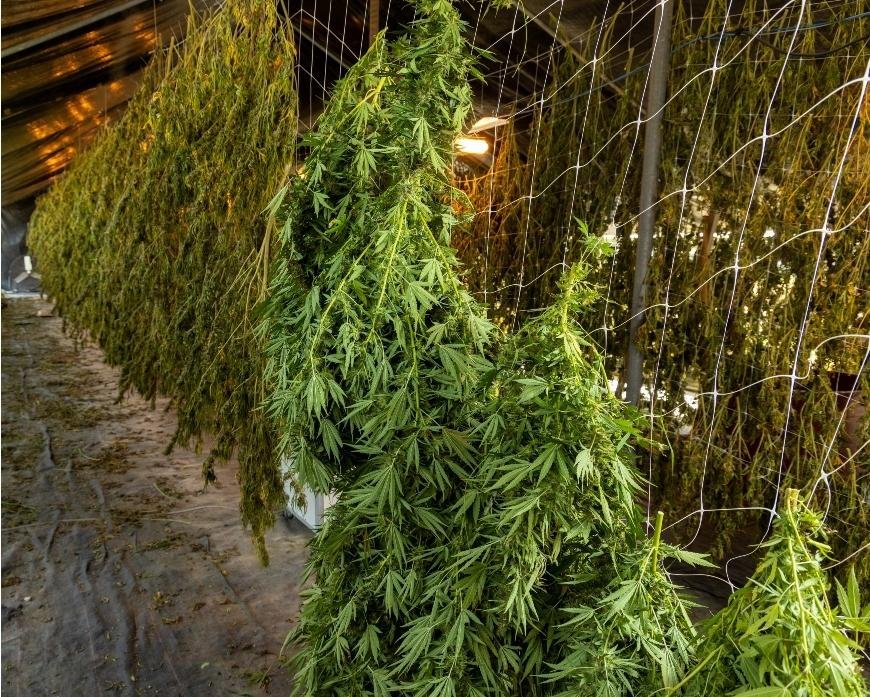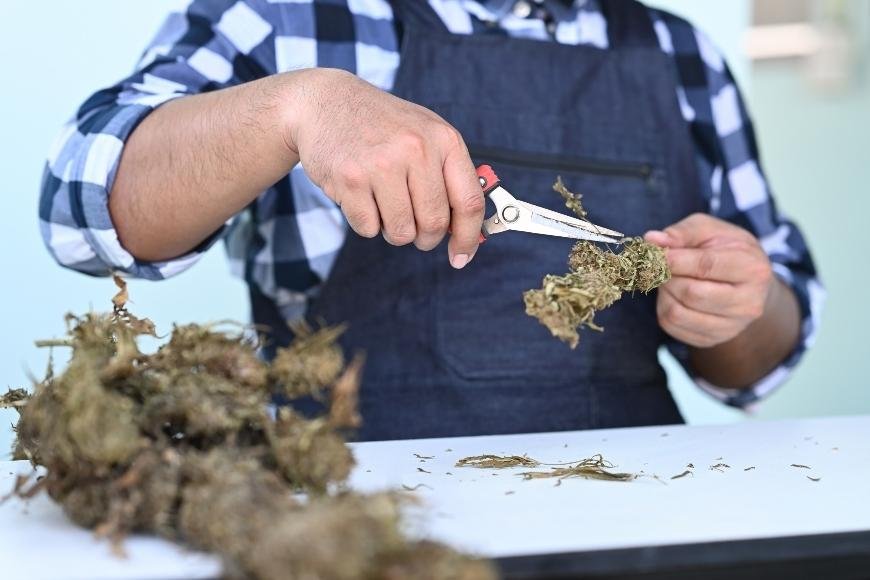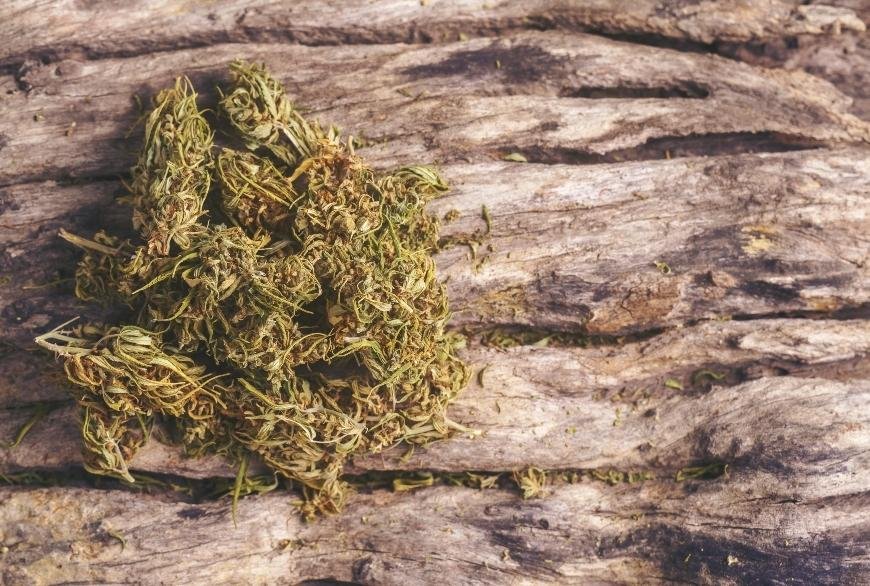How to Harvest and Dry Cannabis Plants
Learn how to harvest and dry cannabis plants with expert tips on trimming, drying methods, and curing for perfect buds. Elevate your green thumb skills!

When it comes to learning how to harvest and dry cannabis plants, there are several crucial steps that must be followed in order to achieve the best possible results. This guide will provide a comprehensive overview of the harvesting process, from when to harvest your cannabis plants to trimming techniques for both wet and dry methods, so you can make sure your buds reach their full potential.
Starting with an overview of the harvesting process itself, we'll discuss when exactly is the right time to harvest your cannabis plants. Next, we'll delve into trimming techniques for both wet and dry trim methods. We will also explore different drying methods available for various specific strains and personal preferences.
Moving on from there, our focus will shift towards properly drying cannabis plants in a suitable environment while maintaining optimal humidity levels. Finally, we'll touch upon curing cannabis – a vital step that significantly impacts flavor profiles and overall quality of your final product.
By following this detailed guide on how to harvest and dry cannabis plants, you can expect well-preserved terpenes as well as potent cured buds ready for consumption or further processing.
Table of Contents:
- Harvesting Cannabis Plants
- Trimming Cannabis Plants
- Different Drying Methods
- Drying Cannabis Plants
- Curing Cannabis Plants
- FAQs in Relation to How to Harvest and Dry Cannabis Plants
- Conclusion
Harvesting Cannabis Plants
Harvesting of cannabis is a critical part in the growth process that necessitates skill and expertise to be done correctly. Knowing when to harvest your cannabis plants will determine how potent, flavorful, and aromatic they will be. The best time to harvest your cannabis plants is when most of the trichomes have turned from clear or cloudy white to a milky color. This means that the plant has reached its peak potency, flavor, and aroma levels.
When harvesting your cannabis plants, it’s important not to rush things as this can cause damage which affects quality and yield. You should take extra care with large colas as they are more prone to damage than smaller buds due to their size and weight.
Start by cutting off larger branches first then work down towards smaller ones until you reach the fan leaves near the base of each branch. When cutting these branches make sure you use sharp scissors or pruning shears so you don’t crush them while cutting them off at their base where they meet up with other parts of the plant like stems or stalks for example.
Hang your buds upside down with twine to promote even air circulation and ensure that all parts of the bud are dried evenly, avoiding any damp spots which could lead to issues during curing. Utilize this method for optimal results, as it guarantees a smooth drying process while eliminating potential problems down the line.
Finally, once everything has dried out properly, curing comes into play. This involves storing harvested marijuana flowers inside sealed containers filled with desiccant packets (such as those found inside shoe boxes) over several weeks allowing terpenes and cannabinoids found within said flowers to become fully activated through decarboxylation. This means consumers will enjoy maximum potency effects whenever consuming products made from freshly cured marijuana flowers.
Harvesting cannabis plants requires careful planning and timing to ensure that the flowers are harvested at their peak potency. With a successful harvest complete, it's time to move on to trimming the cannabis plants for optimal presentation and storage.
Trimming Cannabis Plants
Trimming cannabis plants is an important part of the cultivation process. Proper trimming techniques help to preserve the aroma and flavor, as well as prevent mold growth. In order to ensure a successful harvest, it's important to understand how to hang, trim, and dry your buds correctly.
When hanging your cannabis plants for drying, make sure they are hung in a cool dark place with good air circulation. Ensure optimal drying by suspending the plants in a dim, breezy area to discourage mould development on the buds. When you're ready to start trimming, use sharp scissors or trimmers that have been sterilized with rubbing alcohol beforehand so that you don't introduce any contaminants into your buds. Start by removing all large fan leaves first before moving onto smaller ones near the flowers themselves.
It’s also important not to rush through this step since taking too much off can affect the overall yield of your harvest while leaving too much on could lead to slower drying times which could cause bud rot or other issues down the line if left unchecked. Make sure you take extra care when working around delicate calyxes and try not to damage them during trimming as this can also reduce yields significantly due to decreased airflow within these areas leading up towards harvest time.
Once trimming is complete, it's time to dry the buds. To ensure maximum potency and quality, drying should be done gradually over a few days so that all moisture within each flower has had enough time to evaporate. This will help guarantee that the plant structure itself is completely dry before moving onto curing stages down the line.
Pruning cannabis plants is an essential element of the cultivation procedure, as it helps to guarantee that buds are uniform in size and quality. Different drying methods can be used depending on your desired outcome; however, careful attention should always be paid to properly dry the harvested plant material before use or storage.

Drying Cannabis Plants
Monitoring the trichomes' transformation from clear to milky or amber is essential for determining when cannabis plants are ready for harvesting. Examining the hues and feel of the trichomes (the minuscule filaments on each bud) can be employed to determine ripeness. Once they have turned from clear to milky or amber, it's time for harvesting.
The next step is trimming off any excess leaves that are not part of the buds themselves. Removing these will help speed up drying times as well as make sure that your final product looks nice and tidy. Trimming also helps prevent mold growth during storage.
Once trimmed, there are several different methods you can use to dry your cannabis plants: hanging them upside down in a cool dark room; using a fan with an oscillating head; or placing them on mesh screens in a box with holes punched into it for air circulation. Whichever method you choose, make sure there’s plenty of airflow around each bud so they don’t get too damp and start growing mold.
For optimal results, cannabis plants should be dried in temperatures between 65-75°F (18-24°C) and with humidity levels below 60%. Too much heat or moisture can cause damage to your crop - resulting in lower yields and poorer quality smoke/vapor when consumed later on down the line.
After about 5-7 days, depending on environmental conditions like temperature and humidity levels, your buds should be sufficiently dried out enough for curing - where all those lovely terpenes come alive. Keep a lookout for any signs of mould due to too much moisture left in the crevices of each bloom during this stage. If this happens then take corrective action immediately before things get worse.
Correcting the moisture content of harvested cannabis is a key element in creating an excellent end product. By curing your harvested buds, you can ensure that they are stored and used correctly to maximize their potential effects. Curing Cannabis Plants requires careful attention to detail as it has a direct impact on flavor, potency and overall quality of the finished product.
Different Drying Methods
When it comes to drying cannabis plants, there are a few different methods available. Deciding which drying technique is best for your needs depends on the advantages and disadvantages of each. Here’s an overview of the most popular drying techniques:
Hanging:
This method involves hanging the plant upside down from a string or wire in a cool, dry place with good air circulation. It's one of the most common ways to dry cannabis because it's simple and relatively quick (usually taking 1-2 weeks). The main downside is that some trichomes can be lost due to gravity pulling them off as they dry.
Screening:
Screening involves spreading out small amounts of freshly harvested buds on mesh screens and allowing them to air-dry over several days in an area with low humidity and good airflow. This method takes longer than hanging but helps preserve more trichomes since they don't fall off during drying like they do when using other methods.
Oven Drying:
Oven drying is another popular option for those looking for speedier results—it usually takes about 4 hours per batch depending on oven temperature settings and bud size/density. However, this method isn't recommended unless you're experienced with oven temperatures as high heat can cause terpenes (aromatic molecules) to evaporate quickly, resulting in reduced flavor quality. Additionally, too much heat may also degrade cannabinoids like THC or CBD present in the buds if not done correctly.
Dehydrator Drying:
Dehydrators use warm air circulated through heated coils at specific temperatures set by the user which allows for even faster results compared to oven drying—typically only taking 2-3 hours per batch. Again though, just like with ovens it's important not take things too hot here as higher temps will result in loss of flavor compounds & cannabinoids again reducing overall potency/effectiveness of your final product.
Whichever method you choose, make sure that all excess moisture has been removed before storing your dried cannabis away; otherwise mold could form leading to potentially dangerous health risks if consumed. Lastly, always keep safety first when handling any type of drug-related materials such as marijuana - never smoke near open flames or flammable liquids and always use proper ventilation when smoking indoors.
The different drying methods discussed in this article can help ensure a successful harvest and quality product. Drying cannabis plants is an important step that should be taken to preserve the potency of the buds, so let's take a look at how it's done.
Curing Cannabis Plants
Curing cannabis plants is an essential part of the cultivation process that can’t be overlooked. Curing your plants correctly can significantly upgrade their flavor, smell, strength and longevity. The key to successful curing is patience - it takes time for the cannabinoids in your buds to fully develop and reach their peak potential.
Monitoring the humidity and temperature levels between 55%-65% and 75°F (24°C) respectively, will ensure maximum cannabinoid development in the buds throughout the curing period of 1-4 weeks. Utilizing a hygrometer to check these conditions regularly is essential for achieving top-notch results when harvesting cannabis plants - otherwise you'll be spinning your wheels.

FAQs in Relation to How to Harvest and Dry Cannabis Plants
Should I let my cannabis plants dry out before harvest?
Yes, it is recommended to let your cannabis plants dry out before harvest. This allows the plant's chlorophyll and other compounds to break down properly, resulting in a smoother smoke with better flavor. Additionally, allowing your cannabis plants to dry out helps preserve their potency by reducing moisture content and eliminating any potential for mold or mildew growth. Properly drying your cannabis can also improve its shelf life so you can enjoy it longer.
What are the best drying methods for cannabis?
Hang the cannabis in a dark, well-ventilated area with an upside down orientation to ensure optimal drying. Hang the cannabis in a dim, ventilated space with good airflow to enable moisture to dissipate and inhibit mold or mildew development. Temperature should be kept between 70-75 degrees Fahrenheit and humidity below 50%.
Additionally, keep air circulation moving with fans so that air can pass through the buds evenly. Finally, avoid direct sunlight as this could cause your buds to dry too quickly which could damage their flavor and potency.
How do you dry plants after harvesting?
Once harvested, the plants should be kept in a dim and arid area with adequate ventilation. The temperature of the room should remain consistent and not exceed 70 degrees Fahrenheit. Hang the plant upside down or lay it on a flat surface such as newspaper to allow moisture to evaporate from the leaves and stems. Check for signs of drying regularly by gently pressing on the stem; when it feels brittle, your plants are ready for storage.
Conclusion
Remember that the correct timing and methods used for harvesting and drying cannabis plants are critical to maintain their terpenes, cannabinoids, smell, taste, and general quality. By selecting a method tailored to your setup, you can optimize yield and ensure the highest quality cannabis is produced. With some effort, you can easily acquire the skills necessary to successfully harvest and dry cannabis plants.






















































































































